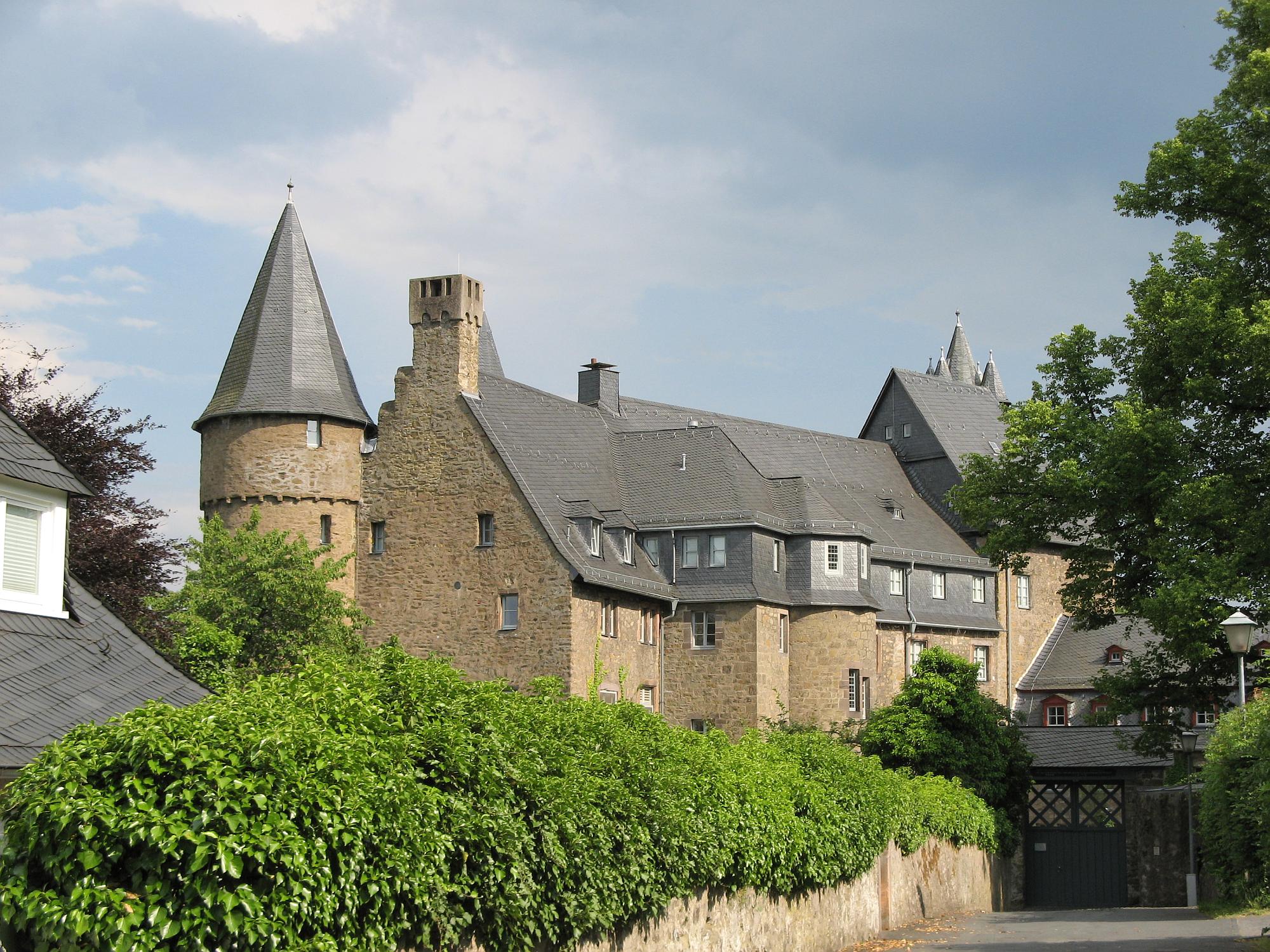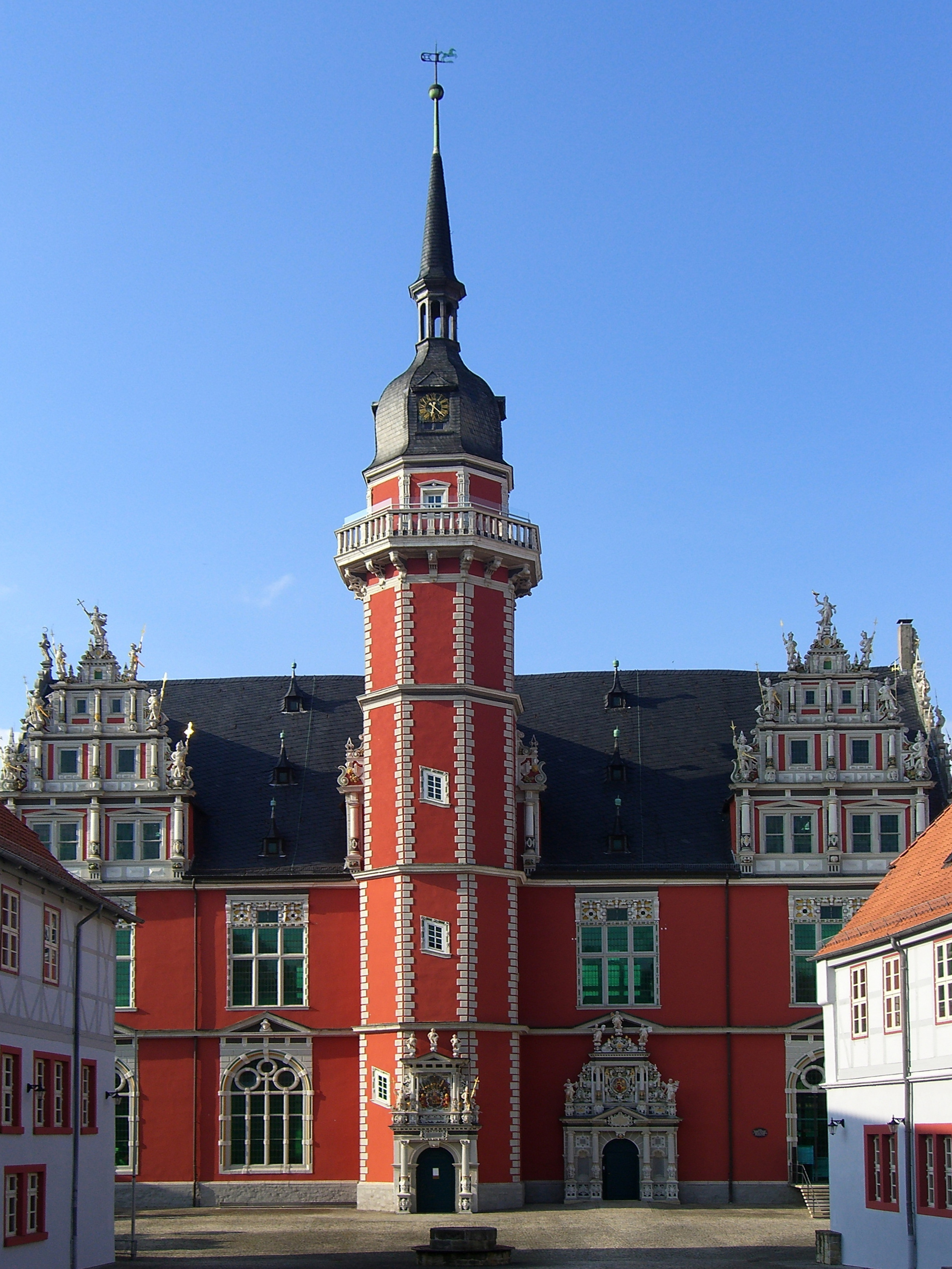|
Johannes Goddaeus
Johann Gödde, latinized as Johannes Goddaeus (7 December 1555 – 5 January 1632), was a German jurist. Life Youth Gödde was born in Schwerte, North Rhine-Westphalia, into a wealthy merchant's family. His father Heinrich Gödde was several times mayor of Schwerte, and his mother Elisabeth née Becker was the daughter of a town councillor of Schwerte. He was the fifth of the couple's six children, but the first to survive childhood. He was originally intended to take over his father's business, but showed his scholarly ability very early, and his parents allowed him to attend school from 1568 at Dortmund, where he learned Latin, Greek and especially Hebrew. In 1570 he moved to study at Deventer, which however he had to leave after only a year because of war. After a short stay in Schwerte he resumed his studies in Dortmund. From 1576 to 1578 he was employed as governor and private tutor of the son of the ''Vogt'' Friedrich von der Mark in Dortmund. Education In 1578 h ... [...More Info...] [...Related Items...] OR: [Wikipedia] [Google] [Baidu] |
Herborn Academy
The Herborn Academy ( la, Academia Nassauensis) was a Calvinist institution of higher learning in Herborn from 1584 to 1817. The Academy was a centre of encyclopaedic Ramism and the birthplace of both covenant theology and pansophism. Its faculty of theology continues as the Theological Seminary of the Evangelical Church of Hesse and Nassau. The institution held the principle that every theory has to be functional in practical use, therefore it has to be didactic (i.e. morally instructive). History In 1584 Count John VI of Nassau-Dillenburg founded the ''Academia Nassauensis'' as a post-secondary institution. He established it upon the request of his brother William the Silent, Prince of Orange in the year of the latter's death. The sovereign granted the students two warm meals and three liters of small beer per day. The Academy (Paedagogium) was originally located in the Herborn Castle. In 1588 Johann purchased the old town hall and, after expanding it, gave it over for ... [...More Info...] [...Related Items...] OR: [Wikipedia] [Google] [Baidu] |
1555 Births
Year 1555 ( MDLV) was a common year starting on Tuesday (link will display the full calendar) of the Julian calendar. Events January–June * January 22 – The Kingdom of Ava in Upper Burma falls. * February 2 – The Diet of Augsburg begins. * February 4 – John Rogers suffers death by burning at the stake at Smithfield, London, the first of the Protestant martyrs of the English Reformation under Mary I of England. * February 8 – Laurence Saunders becomes the second of the Marian Protestant martyrs in England, being led barefoot to his death by burning at the stake in Coventry. * February 9 – Rowland Taylor, Rector of Hadleigh, Suffolk, and John Hooper, deposed Bishop of Gloucester, are burned at the stake in England. * April 10 – Pope Marcellus II succeeds Julius III as the 222nd pope. He will reign for 22 days. * April 17 – After 18 months of siege, the Republic of Siena surrenders to the Florentine–Imperial army. * ... [...More Info...] [...Related Items...] OR: [Wikipedia] [Google] [Baidu] |
Apoplectic
Apoplexy () is rupture of an internal organ and the accompanying symptoms. The term formerly referred to what is now called a stroke. Nowadays, health care professionals do not use the term, but instead specify the anatomic location of the bleeding, such as cerebral, ovarian or pituitary. Informally or metaphorically, the term ''apoplexy'' is associated with being furious, especially as "apoplectic". Historical meaning From the late 14th to the late 19th century,''OED Online'', 2010, Oxford University Press. 7 February 2011 ''apoplexy'' referred to any sudden death that began with a sudden loss of consciousness, especially one in which the victim died within a matter of seconds after losing consciousness. The word ''apoplexy'' was sometimes used to refer to the symptom of sudden loss of consciousness immediately preceding death. Ruptured aortic aneurysms, and even heart attacks and strokes were referred to as apoplexy in the past, because before the advent of medical science, ... [...More Info...] [...Related Items...] OR: [Wikipedia] [Google] [Baidu] |
University Of Giessen
University of Giessen, official name Justus Liebig University Giessen (german: Justus-Liebig-Universität Gießen), is a large public research university in Giessen, Hesse, Germany. It is named after its most famous faculty member, Justus von Liebig, the founder of modern agricultural chemistry and inventor of artificial fertiliser. It covers the areas of arts/humanities, business, dentistry, economics, law, medicine, science, social sciences, and veterinary medicine. Its university hospital, which has two sites, Giessen and Marburg (the latter of which is the teaching hospital of the University of Marburg), is the only private university hospital in Germany. History The University of Giessen is among the oldest institutions of higher educations in the German-speaking world. It was founded in 1607 as a Lutheran university in the city of Giessen in Hesse-Darmstadt because the all-Hessian ''Landesuniversität'' (the nearby University of Marburg (''Philipps-Universität Marbur ... [...More Info...] [...Related Items...] OR: [Wikipedia] [Google] [Baidu] |
Hesse-Darmstadt
The Landgraviate of Hesse-Darmstadt (german: Landgrafschaft Hessen-Darmstadt) was a State of the Holy Roman Empire, ruled by a younger branch of the House of Hesse. It was formed in 1567 following the division of the Landgraviate of Hesse between the four sons of Landgrave Philip I. The residence of the landgraves was in Darmstadt, hence the name. As a result of the Napoleonic Wars, the landgraviate was elevated to the Grand Duchy of Hesse following the Empire's dissolution in 1806. Geography The landgraviate comprised the southern Starkenburg territory with the Darmstadt residence and the northern province of Upper Hesse with Alsfeld, Giessen, Grünberg, the northwestern ''hinterland'' estates around Gladenbach, Biedenkopf and Battenberg as well as the exclave of Vöhl in Lower Hesse. History The Landgraviate of Hesse-Darmstadt came into existence in 1567, when George, youngest of the four sons of Landgrave Philip I "the Magnanimous", received the Hessian lands in the f ... [...More Info...] [...Related Items...] OR: [Wikipedia] [Google] [Baidu] |
Landtag
A Landtag (State Diet) is generally the legislative assembly or parliament of a federated state or other subnational self-governing entity in German-speaking nations. It is usually a unicameral assembly exercising legislative competence in non-federal matters. The States of Germany and Austria are governed by ''landtage''. In addition, the legislature of the Italian autonomous province of South Tyrol is known in German as a ''landtag''. Historically, states of the German Confederation also established ''landtage''. The Landtag of Liechtenstein is the small nation's unicameral assembly. Name The German word Landtag is composed of the words ''Land'' (state, country or territory) and ''Tag'' (day). The German word ''Tagung'' (meeting) is derived from the German word ''Tag'', as such meetings were held at daylight and sometimes spanned several days. Historic Landtag assemblies States of the Holy Roman Empire In feudal society, the formal class system was reflected in the ... [...More Info...] [...Related Items...] OR: [Wikipedia] [Google] [Baidu] |
Landgraviate Of Hesse-Marburg
The Landgraviate of Hesse-Marburg (german: Landgrafschaft Hessen-Marburg) was a German landgraviate, and independent principality, within the Holy Roman Empire, that existed between 1458 and 1500, and between 1567 and 1604/1650. It consisted of the city of Marburg and the surrounding towns of Gießen, Nidda and Eppstein, approximately what is today called Upper Hesse ('). The area had been a semi-independent county under the counts Giso or Gisonen since the 11th century, which at their extinction fell to the Landgraves of Thuringia Thuringia (; german: Thüringen ), officially the Free State of Thuringia ( ), is a state of central Germany, covering , the sixth smallest of the sixteen German states. It has a population of about 2.1 million. Erfurt is the capital and lar ... in the 1130s. When the daughter of St. Elizabeth of Hungary, Sophie of Brabant, was able to secure the Western parts of Thuringia for her son Henry the Child in 1265, therefore founding the state ... [...More Info...] [...Related Items...] OR: [Wikipedia] [Google] [Baidu] |
Copenhagen
Copenhagen ( or .; da, København ) is the capital and most populous city of Denmark, with a proper population of around 815.000 in the last quarter of 2022; and some 1.370,000 in the urban area; and the wider Copenhagen metropolitan area has 2,057,142 people. Copenhagen is on the islands of Zealand and Amager, separated from Malmö, Sweden, by the Øresund strait. The Øresund Bridge connects the two cities by rail and road. Originally a Vikings, Viking fishing village established in the 10th century in the vicinity of what is now Gammel Strand, Copenhagen became the capital of Denmark in the early 15th century. Beginning in the 17th century, it consolidated its position as a regional centre of power with its institutions, defences, and armed forces. During the Renaissance the city served as the de facto capital of the Kalmar Union, being the seat of monarchy, governing the majority of the present day Nordic countries, Nordic region in a personal union with Sweden and N ... [...More Info...] [...Related Items...] OR: [Wikipedia] [Google] [Baidu] |
Bremen
Bremen (Low German also: ''Breem'' or ''Bräm''), officially the City Municipality of Bremen (german: Stadtgemeinde Bremen, ), is the capital of the Germany, German States of Germany, state Bremen (state), Free Hanseatic City of Bremen (''Freie Hansestadt Bremen''), a two-city-state consisting of the cities of Bremen and Bremerhaven. With about 570,000 inhabitants, the Hanseatic League, Hanseatic city is the List of cities in Germany by population, 11th largest city of Germany and the second largest city in Northern Germany after Hamburg. Bremen is the largest city on the River Weser, the longest river flowing entirely in Germany, lying some upstream from its River mouth, mouth into the North Sea, and is surrounded by the state of Lower Saxony. A commercial and industrial city, Bremen is, together with Oldenburg (city), Oldenburg and Bremerhaven, part of the Bremen/Oldenburg Metropolitan Region, with 2.5 million people. Bremen is contiguous with the Lower Saxon towns of Delmenhor ... [...More Info...] [...Related Items...] OR: [Wikipedia] [Google] [Baidu] |
University Of Franeker
The University of Franeker (1585–1811) was a university in Franeker, Friesland, the Netherlands. It was the second oldest university of the Netherlands, founded shortly after Leiden University. History Also known as ''Academia Franekerensis'' or the University of Friesland, it consisted of departments of Theology, Law, Medicine, Philosophy, Mathematics and Physics. Among its well-known students was Peter Stuyvesant, last director-general of the Dutch colony of New Netherland. Initially the university had an excellent reputation, attracting students from far and wide, but from 1700 its fortune changed. The university was disbanded by Napoleon in 1811, along with the Universities of Harderwijk and Utrecht. After the end of the French régime, the university was not restored. Instead, an ''Athenaeum illustre'' was founded, which did not have the right to issue doctoral degrees. In 1843, the ''Athenaeum'' itself was disbanded because of a lack of students. Today, Franeker has n ... [...More Info...] [...Related Items...] OR: [Wikipedia] [Google] [Baidu] |
University Of Helmstedt
The University of Helmstedt (german: Universität Helmstedt; official Latin name: ''Academia Julia'', "Julius University"), was a university in Helmstedt in the Duchy of Brunswick-Wolfenbüttel that existed from 1576 until 1810. History Founded by and named after Duke Julius of Brunswick-Wolfenbüttel on 15 October 1576, the first university of the duchy and the first Protestant university of the northern Holy Roman Empire quickly became one of the largest German universities. In order to train pastors and administrators for work in the Lutheran churches, the duchy needed a university of its own. In 1575, Julius obtained the Emperor's permission to open a university in Helmstedt. One year later the first lectures started. The princes of Wolfenbüttel held the office of the rector, starting with Julius' 12-year-old son John Henry. Tilemann Heshusius was an important early Lutheran theologian at Helmstedt. He developed a clergy network in the region that supported other Hel ... [...More Info...] [...Related Items...] OR: [Wikipedia] [Google] [Baidu] |






